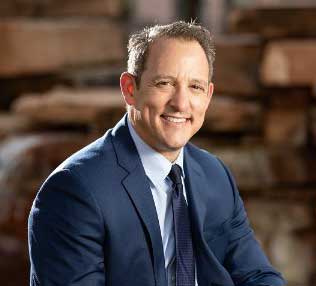Platelet-rich therapy (PRP) is being used in surgeries to promote cell regeneration since 1987. The procedure involves taking the patient’s own blood, processing it in the laboratory to concentrate the platelets, and injecting the platelets into the body.
What are platelets?
Platelets are fragments of the megakaryocyte, which is a large cell in the bone marrow. Megakaryocytes differentiate and mature from stem cells, which retain the ability to renew themselves and turn into other specialized cells. In addition, platelets leave the bone marrow to circulate in the bloodstream. Platelets bring white blood cells to an injured area, facilitate blood clotting, release growth factors, and facilitate tissue regeneration.
Is PRP therapy proven to be effective?
There is much research to support that PRP therapy is effective for treating bone and joint conditions. Researchers studied 78 patients with knee osteoarthritis who received PRP injections. Compared to placebo saline injections, the study found that knees treated with PRP injections saw a reduction in stiffness and pain, and also, improved in function at the 3-month follow-up.
In a small study of patients with arthritic knees, MRI tests were used to evaluate joint damage following PRP injections. Patients receiving PRP injections had less pain after 12 months of therapy. In addition, MRIs showed that the degenerative process had not progressed in most patients who receive these treatments. The evidence also found that arthritis did not worsen, and patients had less pain than they did the previous year.
Am I a candidate for PRP therapy?
PRP does not help all patients with chronic pain, but it does work in certain situations. PRP appears to fail to treat symptoms in some people because of differences in PRP formulation and changes in certain variables, such as frequency of injections and the amount of PRP injected. PRP also does not appear to work for people with severe joint arthritis and degeneration.
How does PRP work?
When the concentrated platelet solution is injected into a damaged area, it stimulates the joint or bone causing mild inflammation that triggers healing. As a result, new collagen forms, and as this collagen matures, it shrinks, tightens, and strengthens the body structures in the damaged area. The concentrated platelets also contain growth factors and bioactive proteins that initiate and accelerate tissue repair. These substances increase production of stem cells to stimulate connective tissue healing, bone repair and regeneration, and wound healing.
How does PRP compare to cortisone shots?
Cortisone shots offer only temporary pain relief by stopping inflammation. However, corticosteroids to not offer long-term healing like PRP. Studies show that PRP offers better tissue regeneration along with anti-inflammatory properties.
What body regions can be treated with platelet-rich platelet therapy?
PRP injections help regenerate many body areas, including the cervical (neck), thoracic (mid-back), and lumbar (low back) spine, elbows, shoulders, wrists, knees, hips, and ankles. Many orthopedic specialists use PRP therapy for sports injuries, degenerative joints, degenerative disc disease, and scoliosis.
How is platelet-rich plasma obtained?
Before a platelet-rich plasma procedure, the patient meets with the doctor for a consultation. After the decision to have PRP therapy is made, the blood is taken from the patient and placed in a special centrifuge. This device spins the blood to separate the platelets from the blood. After concentrating the platelets, the solution is injected into the damaged, injured, or degenerative body region.

Dr. David Greene
MD, PhD, MBA
Dr. David Greene, MD, PhD, MBA, is a pioneering leader in regenerative medicine and healthcare marketing. As a residency and fellowship-trained orthopedic surgeon, Dr. Greene transitioned from clinical practice to become the founder and CEO of R3 Stem Cell and US Lead Network, where he has revolutionized patient care and medical practice growth through innovative therapies and digital marketing strategies. He has authored two influential books on healthcare internet marketing, ranks among the top expert authors globally, and has been featured on the cover of Corporate Vision magazine for his impact on global regenerative therapies. Beyond his professional achievements, Dr. Greene is passionate about education, compassion, and continuous innovation.










No Comments